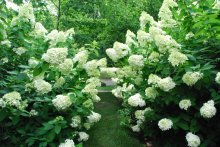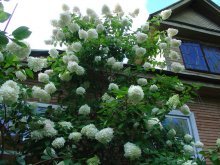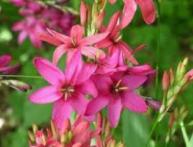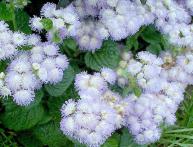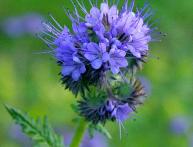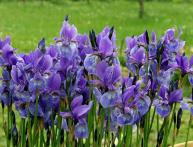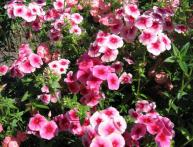Hydrangea paniculata in the garden, planting and caring for it
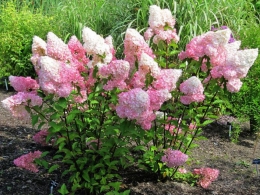
The genus Hydrangea includes more than 80 species of plants. Most of them grow as deciduous or evergreen shrubs, but there are also trees and vines that perfectly master all vertical supports and can climb to a height of about 30 meters. The homeland of most species is the countries of Asia and America.
Many hydrangeas are quite heat-loving and preserving the bushes in winter is a rather difficult process. However, there are species that are found in the Far East and other areas with temperate climates. Their varietal varieties tolerate winter cold without shelter. We are talking primarily about paniculata hydrangea. Let's try to find out what paniculata hydrangea looks like, about planting and care.
Content:
- Botanical description of Hydrangea paniculata
- Where and how to plant paniculata hydrangea
- Rules for planting hydrangea paniculata
- Basic techniques for caring for hydrangea
Botanical description of Hydrangea paniculata
In its wild form, paniculata hydrangea can grow both in shrub form and in the form of medium-sized trees up to 8 - 10 m in height. Found in China, Japan and the Russian Far East. Although the root system is located close to the surface, the diameter of the roots exceeds the diameter of the crown. The leaves are oval, the length of the leaf blades can be up to 10-12 cm.
Gardeners are most attracted to paniculate inflorescences. They have a shape close to a cone with a fairly wide base. The height of the inflorescences exceeds 20-25 cm.The panicles are collected from two types of flowers. There are sterile flowers. They are quite large, 25 mm-30 mm. The number of petals is 4, the color changes during the season from green, snow-white, to pink or other shades depending on varieties.
The flowers, which are called fertile, are much smaller and lose their white petals early. Flowering begins from the fourth to fifth year of life. The first flowers open in the third decade of June and only the first frosts in early October can destroy the beautiful inflorescences of paniculata hydrangea. In addition to aesthetic pleasure, hydrangea flowers can also bring benefits, like honey plants. In place of the flowers, fruit-boxes with a large number of very small seeds appear.
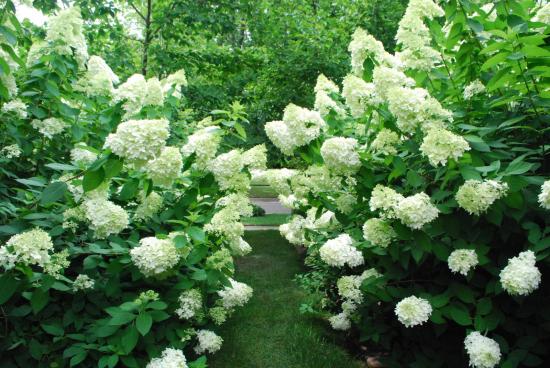
The advantage over other species is that paniculata hydrangea feels good in shady places, it has a good growth rate and frost resistance. In addition to the bush form, paniculata hydrangea can be grown as a small standard tree. In addition, paniculata hydrangea has many attractive varieties and varieties:
- Bobo - dwarf variety, height 0.8-1.0 m, pink flowers
- Diamond Rouge - flowers change from white to cherry at the end of the season
- Pink Diamond - the length of the panicles is more than 30 cm, the flowers are first white-cream, then turn red
- Tardiva - late variety, cream flowers
- Bombshell - dwarf variety, white flowers
Every year the assortment of paniculata hydrangea is updated; all you have to do is choose what you like and before planting, learn about the features of growing paniculata hydrangea in the garden.
Where and how to plant paniculata hydrangea
Selecting a location
In order for paniculata hydrangea to show all its best varietal characteristics, it cannot be planted in open sun. From bright lighting, flowers lose their decorative effect. The best location is partial shade. The next requirement applies to soil. For lush flowering you will need a plot of soil:
- clayey
- fertile
- sour
- wet
On alkaline soils, hydrangea loses the brightness of its inflorescences and grows poorly and slowly.
You can increase the acidity of the soil by adding:
- brown peat
- sawdust
- coniferous land
- rotted spruce or pine needles
Deoxidation of the soil in any way is not allowed, for example, by adding:
- lime
- ash
- chalk
If the site meets all the conditions, then you can begin planting the plant on the site.
Rules for planting hydrangea paniculata
The time for planting hydrangeas for regions with a temperate climate is spring; in warm regions they can be planted in both spring and autumn. The planting area is cleared of plant debris and dug up using a shovel. For separate planting, dig holes up to 40 cm deep and up to 70 cm wide. If hydrangea is needed for a hedge, then dig a continuous groove of the same width and depth. Depending on the variety, the distance between plants can be from 0.7 m to 2.5 m.
Young plants can be planted closer and later replanted. Plants that are 3-4 years old are taken for planting. If the seedling has bare roots, then they are shortened a little. Place the hydrangea in the hole and cover the roots with soil.
They compact it. Then water the plant generously with a bucket of water. The earth is mulched. Peat or compost is good for this. Ground parts are cut off immediately after planting. 3-4 buds are left on each shoot. In autumn, per year landings Mineral fertilizers need to be applied to young bushes. The success of further cultivation depends on proper care of paniculata hydrangea.
Basic techniques for caring for hydrangea
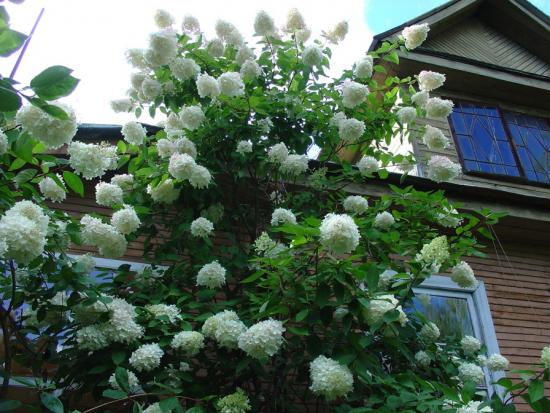
In addition to regularly loosening the soil, removing weeds and abundant watering, hydrangea needs feeding.
Feeding hydrangea
In spring, the plant needs to be fed with a urea solution. To do this, 20 g of the substance is dissolved in 10 liters of water, this solution is poured under the bush. For large bushes you need at least 20 liters of urea solution. At the beginning of the growing season, adding nettle infusion gives good results. First, nettle infusion is poured under the bush, and then spilled with a bucket of clean water.
Mullein solution is added every two weeks. The solution is prepared from a bucket of manure soaked for three days, filled with three liters of water. After which a liter of infusion is diluted in 10 liters of water and the bush is watered. When buds appear on the plant, two mineral fertilizings are needed with a break of two weeks. To preserve paniculata hydrangea bushes decorative appearance, it needs to be trimmed regularly.
Pruning hydrangea paniculata
Before the onset of winter, all dry inflorescences are cut off from the plant. In the spring, before the buds have yet begun to open, all weak, incorrectly located shoots are completely cut off from the plant. Those shoots that have suffered from frost are cut back to a healthy place. Annual shoots are shortened by 1/3.
If the bush is old, then all the old shoots are cut into a ring. Properly and promptly pruned hydrangea blooms profusely. In the garden, paniculata hydrangea looks good in single landings, and in groups. Cut inflorescences are used to create dry compositions.
Video about hydrangea and how it blooms:

